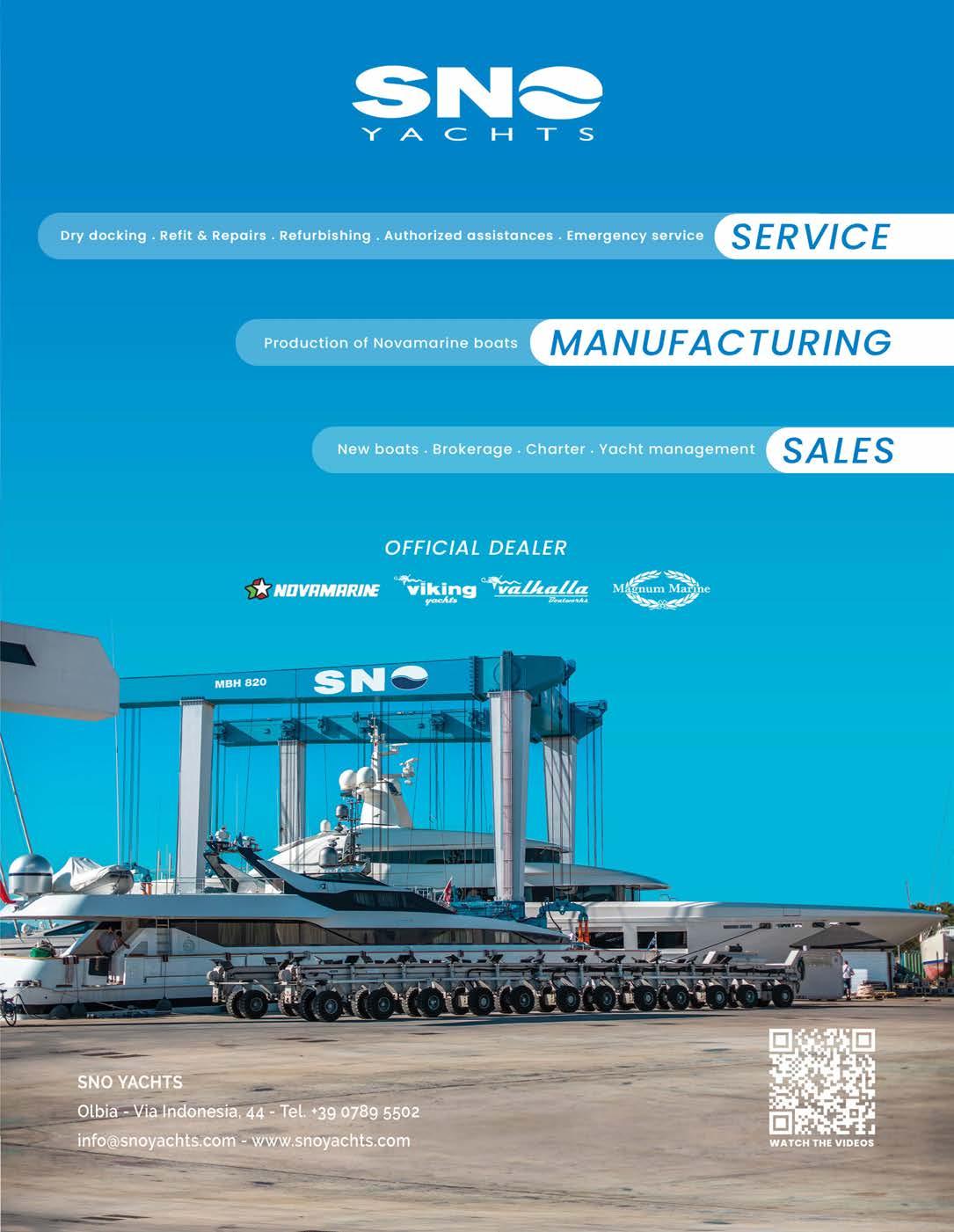
4 minute read
HP WATERMAKERS
La prima novità di HP Watermakers riguarda la gestione del dissalatore da remoto o dalla plancia dell’imbarcazione. L’azienda ha sviluppato una sua interfaccia chiamata Part-NET 2.0 che consente di visualizzare e modificare tutti i parametri di funzionamento del dissalatore. Lo si può fare dal plotter installato in plancia e la compatibilità di questa interfaccia è garantita con tutti i principali modelli come Garmin, Raymarine, Furuno, Simrad, B&G e Lowrance. A cosa serve visualizzare i parametri sul plotter? Per prima cosa a monitorare il funzionamento. In modo facile e intuitivo ci si potrà rendere conto di quanta acqua produce il dissalatore
GESTIRE IL DISSALATORE MANAGING THE DESALINATOR
GIANNI ZUCCO, COFONDATORE DI HP WATERMAKERS, HA PRESENTATO DUE NOVITÀ ASSOLUTE PER LA GESTIONE DEL DISSALATORE DAL PLOTTER O DALLO SMARTPHONE GIANNI ZUCCO, THE CO-FOUNDER OF HP WATERMAKERS, PRESENTED TWO ABSOLUTE NOVELTIES TO MANAGE THE DESALINATOR BY THE PLOTTER OR THE SMARTPHONE
by Niccolò Volpati

e in quanto tempo. E, inoltre, verificare che tutto stia andando per il meglio, perfino la pressione di esercizio. Oltre al controllo c’è la personalizzazione dei parametri. Per far sì che il dissalatore funzioni a dovere è possibile che alcuni parametri debbano essere modificati. Il livello di salinità dell’acqua, per esempio, non è lo stesso in tutte le parti del mondo e quindi poter regolare questo parametro consente al dissalatore di essere sempre molto efficiente. Part-NET 2.0 permette di compiere questa operazione senza dover scendere
MWT va semplicemente collegato ai galleggianti del serbatoio.



in sala macchine intervenendo manualmente sulla macchina perché basterà farlo dal plotter installato in plancia. Tutto questo, se si dispone di una connessione Internet, si può fare anche da smartphone o tablet e quindi da remoto. Ma le novità presentate a Cannes non si limitano a questo. La seconda novità si chiama MWT BASIC, acronimo di Marina Water Treatment. Si tratta di un sistema di filtraggio dell’acqua dolce di banchina portatile che, volendo, può anche essere montato fisso a bordo. Perché si dovrebbe filtrare l’acqua dolce fornita dai marina? Perché spesso è molto “dura” e piena di calcare. E, a lungo andare, il calcare intasa gli impianti. Succede a casa e succede anche in barca. Per evitarlo, MTW, grazie a una speciale membrana e al suo sistema di filtraggio senza pompe, e quindi senza impiego di energia elettrica, garantisce di avere un grado di mineralizzazione dell’acqua molto basso. Per metterlo in funzione è sufficiente collegarlo ai galleggianti del serbatoio e MWT si preoccuperà di riempirli automaticamente senza dover intervenire su alcuna valvola. The first innovation from HP Watermakers concerns desalinator management either remotely or from the navigating bridge. The company has developed its interface called PartNET 2.0 allowing users to view and adjust all the desalinator’s operating parameters. This can be done from the plotter installed on the navigation bridge and its interface is compatible with all the main models such as Garmin, Raymarine, Furuno, Simrad, B&G, and Lowrance. What is the purpose of displaying these parameters on the plotter? First, to monitor the desalinator’s operations. Easily and intuitively, you will be able to see how much water the desalinator produces and how long it takes. Also, you

La schermata “Home” di Part-NET 2.0 permette di avere sott’occhio tutti i dati di funzionamento del dissalatore.
The “Home” screen of Part-NET 2.0 provides an overview of all the desalinator’s operating data.
will be able to check that everything is functioning correctly, even under working pressure. In addition to control, however, you can also customise the parameters. To ensure that the desalinator is working properly, you may have to change or adjust certain parameters. The salinity level of the water, for example, is not the same in every part of the world, so being able to adjust this parameter allows the desalinator to always remain equally efficient. With Part-NET 2.0 you can carry out this operation without the need to go down to the engine room and intervene manually on the machine because it can be done from the plotter installed on the navigation bridge. All this can also be managed from a smartphone or tablet, i.e. remotely, if you have an Internet connection. But the innovations presented in Cannes do not stop here. The second new feature is called MWT BASIC, an acronym for Marina Water Treatment. This is a portable system for filtering fresh water from the quay, which can also be permanently mounted on board if desired. Why should you filter fresh water provided by marinas? Because it is often very “hard” and full of limestone. And, in the long run, limestone clogs your installations. It happens at home and it also happens on the boat. To avoid this, MTW guarantees a very low degree of water mineralisation thanks to a special membrane and its filtration system without pumps, i.e. without the use of electricity. To start it up, all you have to do is connect it to the tank floats and MWT will take care of filling them automatically without the need to intervene on any valve.
I modelli sono disponibili in due versioni, da 60 a 120 litri, a seconda delle dimensioni della barca e della capacità del serbatoio dell’acqua.
Models are available in two versions, from 60 to 120 liters, depending on the size of the boat and water tank capacity.













